Launch strategy
The date was finally set for the launch of Network SouthEast. It was to be June 10 1986 - a date that is still affectionately remembered today by those involved. It was also to create the most concentrated workload that it was possible to cram into six months.
The new MD, Chris Green, insisted that the early announcements should be about quality improvements, and the first public statement came on February 12 when he announced that “we are launching an all-out drive to improve the quality of service for commuters in London and the South East under the slogan ‘Operation Pride’.”
He also revealed the injection of an additional £10 million funding into quality projects, to show that he meant business.
Political support
The new Minister of Transport, David Mitchell, was concerned by the growing criticisms reaching him from dissatisfied London commuters. He appreciated that the huge reduction in L&SE subsidy over the previous three years had impacted on performance quality, and he proved supportive of ‘Operation Pride,’ giving the new sector strong public support for its quality initiatives.
The media
The bigger challenge was how to get the media - national and regional - on side before the relaunch. The Evening Standard had made common cause with its commuter readers and had created a Commuters’ Club, which reinforced an ‘Isn’t it terrible?’ culture. A typical article in early 1986 read: “Rush hour travel for more than 400,000 people is a daily purgatory of grossly overcrowded trains … grimy carriages, shabby furnishings and ancient rolling stock.”
Chris realised in his first few weeks that The Standard was going to be the key to a successful relaunch in the South East. So he did the only thing possible and asked to meet its editor, Louis Kirby. The meeting was a success. Chris explained that, as the newcomer, he needed a period of support to improve the product and re-motivate the staff.
The Evening Standard offered a truce while the new NSE team raised its game. It went further, and also offered positive support through profile interviews in which Chris would explain his plans, and would encourage a more informed debate with its readers. The Standard’s subsequent endorsement of ‘Operation Pride’ was positive, and was immensely helpful in getting the message across to commuters that improvements were on the way.
In turn, Network SouthEast recognised the paper’s support by inviting its editor to name the first NSE-branded locomotive The London Standard, before using the paper for a major advertising campaign from June, when quality had finally started to improve.
‘Operation Pride’
Chris was also quite open with the media about his own commuting experiences. A Times profile on May 9 revealed the extensive travelling that the new managing director had been making to different overnight destinations, and stated that his mission was to “restore the quality of service standards”. It also shared his concern that L&SE’s achievement in cutting over a third off the taxpayer’s subsidy had left the sector rather ragged in the quality of its delivery.
‘Operation Pride’ became a landmark in creating a common cause between railway, commuters, politicians and media. The Evening Standard published the quality standards at the start of ‘Operation Pride’, together with the current levels of achievement. Commuters were given two-monthly updates on the improvements thereafter, while the Standard wished NSE well in its crusade to raise customer quality.
This public support also proved critical in helping NSE to get the extra £10m of funding that it needed to get ‘Operation Pride’ kick-started.
Finance and quality were finally linked. NSE was now able to ‘walk the talk’ and commit to the recruitment of 1,700 extra staff to fill the vacancies for train crew, booking offices, cleaners and telephone enquiry bureaux. The public evidence of change was to be cleaner trains and stations - backed by an accelerated painting programme for 250 stations each year.
Letters from MPs gradually changed, from grumbling about performance to campaigning for their local stations to be modernised first - complete with high-profile opening ceremonies.
The launch event
Finally, all the pieces were in place for the relaunch of the sector. Network SouthEast came into the world at 1030 on Tuesday June 10 1986 at Waterloo station. The guests arrived to find the flagship terminus transformed. The station was glistening like a cathedral in the sunshine, and had probably never looked better in its history.
Architect Ronnie McIntyre was using Waterloo to showcase how Network SouthEast would look in the future, with newly cleaned roof glass and gleaming, white-tiled floors reflecting light around the station. The replacement of black tarmac with white terrazzo was to become an NSE trademark. The modernised shops, barrier lines, advertising and indicators were complete in their new NSE branding, and more than one guest said they felt they had arrived in an airport.
A special area had been prepared in the Long Gallery, below the platforms at Waterloo, to accommodate all the guests. Here the new MD finally announced the new Network SouthEast name, the brand livery and a series of supporting initiatives.
The audience of 200 VIPs ranged from David Mitchell, Minister of Transport, to Louis Kirby, editor of the Evening Standard, and from BR Board Members to Passenger Consultative Committees, as well as a wide range of individuals from all sections of the media.
‘One Railway for London’
The new Network SouthEast had just one chance to get its new strategy across to the media.
Chris began by reminding the audience of the sheer scale of the daily commuter movement around London. The new Network Southeast served a population of 17 million people (four times the size of the Paris suburban network), and he was proud to be operating the largest commuter movement in Europe. To put it in perspective, the daily movement of 400,000 commuters was the equivalent of delivering a D-Day operation twice a day.
But the very scale of the commuting operation left Network SouthEast with a huge stock of unused seats in the off-peak period - and it was this imbalance that was preventing the business from covering its costs. The big idea was to earn more investment by doubling off-peak income.
Network SouthEast was going to create ‘One Railway for London’ for the first time in railway history. On that very day a new NSE Map was going on display at all 930 stations, to increase awareness of the travel opportunities, while a new One Day Capitalcard would be introduced to make travel simpler and cheaper across the network.
All these initiatives would then be supported by the biggest TV and press advertising campaign that London had ever seen. Chris Green summed up the new NSE as creating “a single champion for the expansion of London’s rail system”.
The public commitments
The end was also in sight for dreary stations - every one of the stations was to be smartened up. A newly painted and branded station would be on show on every route that evening, while a major programme of refurbishment was being launched to run for the next three years. Twenty-six new Heavy Cleaning gangs had been recruited to give stations a three-monthly heavy clean, and a further £7m was announced to provide long-overdue public address and departure indicators at every station.
A brand new ‘Train of the Future’ - to be called the ‘Networker’ - was also announced, but as it could not be delivered before 1990, every one of NSE’s 7,000 coaches would be upgraded in the next three years. Faded seat upholstery would be replaced with bright new NSE moquette, and coaches would be repainted in the brand as part of ‘One Railway for London’. Home-going commuters would find a newly branded and upholstered train running on each of the core routes on the evening of the launch.
And perhaps most important of all, the new One Day Capitalcard was to be introduced on the very next day, and would bring unlimited bus and Tube travel in London for a slightly enhanced day return fare. This new off-peak card was to be supported by blanket advertising with its own television advert called ‘Swanning around London’, together with full-page advertisements in the national media and an extensive house-to-house distribution of the NSE map and off-peak offers.
NSE had chosen to burn its bridges with this comprehensive launch. It had gone public on its commitments to improve the quality of its services, while also reducing the subsidy. There was to be no going back now. But it would also be harder for Whitehall to deny the additional investment that NSE would need to modernise its network, so as to meet these public quality standards.
The brand revealed
After the speeches, the guests were invited up to Platforms 1 and 2, where the first two NSE-branded trains were simultaneously driven into the station in their gleaming new liveries. One train was formed by a modern Class 455 inner-suburban unit, while the second was a Class 50 locomotive with a rake of branded coaches for the Exeter line.
The Class 455 unit then took guests on a ceremonial trip from Waterloo to Richmond, where they were shown the first branded station. This had only just been completed overnight, and had all the hallmarks of wet paint to prove it. And while the new livery was being unveiled at Waterloo and Richmond, every route on the new NSE Map was show-casing at least one train and one station in the new livery, to make the maximum impact across the network.
Painting 14 trains in secret had proved a nightmare for the Trains Team. It involved producing detailed drawings for each class of train, then painting them in closed sheds around the network.
The only bad moment came when a newly liveried Class 317 was stabled outside Hornsey depot by mistake in full view of passing trains, but luckily neither the brand name nor the colour scheme became public before the launch.
The ‘Manifesto’
The launch commitments were made even more public by being printed in a colourful Network Newsletter that became known as ‘The Manifesto’ - as it was a public promise to improve the quality of service in very specific ways. All commuters were handed a copy of the ‘Manifesto’ as they returned home on the evening of the launch, and 850,000 copies were distributed in just two days.
This set out the details of the launch, and amplified what passengers were already reading on the front page of the Evening Standard and what they were suddenly seeing in the way of new-look trains and stations. It encapsulated everything that the new NSE brand was to stand for in just four pages - and was to set the agenda for the next four years.
A huge TV and press advertising campaign started on the first night, intended to fill the empty off-peak seats. JWT’s striking new French Connection TV advert featured the new NSE brand, and was aimed at promoting the new network as the “quickest way in and out of town” in a decidedly jazzy Gene Hackman way. The first of the new full-page press advertisements was also run, while the new Network SouthEast Map and poster advertising appeared at every station.
Mission accomplished
The NSE launch on June 10 1986 was a defining moment for the sector. A supervisor remembers NSE “hitting Anglia as a breath of fresh air which brought a strong feeling of purpose - the enthusiasm was amazing”. The launch had given the business a clear mission: it had committed itself to raising quality standards and creating a dramatic increase in off-peak business. It was going to do this while reducing its need for public subsidy - but now it just had to deliver these worthy objectives.
One manager summed it up when he remarked: “Things happened in NSE which you never dreamed were possible a few years earlier.”
- This feature was published in RAIL 747 on April 30 2014

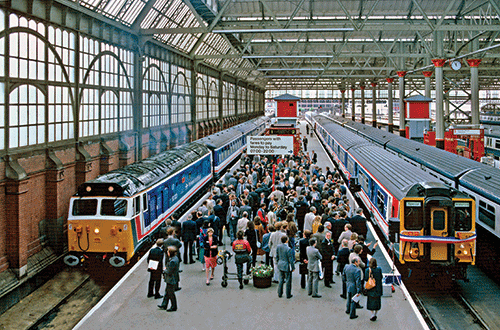
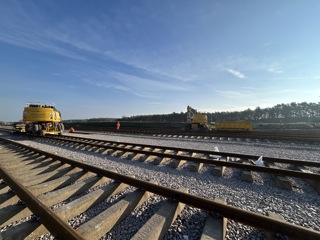
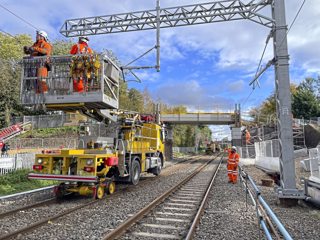
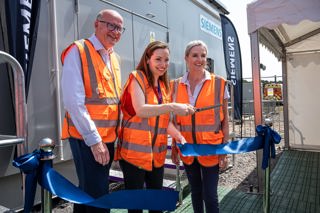
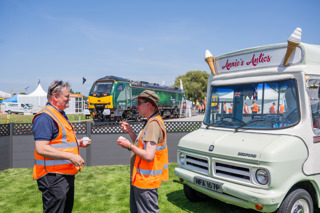
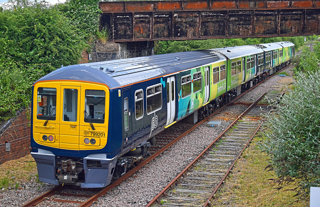











Login to comment
Comments
No comments have been made yet.